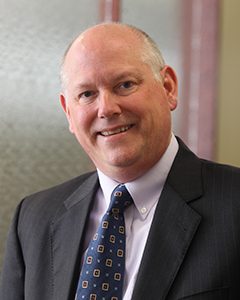The SECURE Act Has Finally Passed – What Does It Mean? (Part Two)

Continuing a look at some of the other major provisos in the recently passed Setting Every Community Up for Retirement Enhancement (SECURE) Act, I would like first to discuss its change in how compensation for some health care workers is treated.
Many such workers do not have taxable income because their only compensation comes from “difficulty of care” payments that are exempt from taxation. As a result, they cannot save for retirement in a defined contribution plan or Individual Retirement Account (IRA).
Under the new law, however, home health care workers can contribute to a plan or IRA because tax-exempt “difficulty of care” payments are treated as compensation for purposes of calculating the contribution limits to defined contribution plans and IRAs. This is a splendid development, which provides a heretofore ignored segment of employees a chance at putting aside real savings for their retirement.
On the administrative side, there are a number of improvements that should also be noted. SECURE permits businesses to treat qualified retirement plans adopted before the due date (including extensions) of the tax return for the taxable year, as having been adopted as of the last day of the taxable year. This means that there is now additional time to establish a plan providing flexibility for employers who are considering adopting a plan — and the opportunity for employees to receive contributions for that earlier year, as well as to begin accumulating retirement savings.
In addition, SECURE directs the Internal Revenue Service (IRS) and U.S. Department of Labor to effectuate the filing of a consolidated Form 5500 for similar plans. Plans eligible for consolidated filing must be defined contribution plans, with the same trustee, the same named fiduciary (or named fiduciaries) under ERISA, and the same administrator, using the same plan year, and providing the same investments or investment options to participants and beneficiaries.
We support this part of the legislation, as the change will reduce aggregate administrative costs, making it easier for small employers to sponsor a retirement plan.
The legislation also provides certainty for plan sponsors in the selection of lifetime income providers, a fiduciary act under ERISA. If certain conditions are met, fiduciaries are now afforded an optional safe harbor to satisfy the prudence requirement and are protected from liability for any losses related to the retirement income contracts. Removing ambiguity about the applicable fiduciary standard eliminates a roadblock to offering lifetime income benefit options under a defined contribution plan.
Nondiscrimination rules have also been modified with respect to closed plans, in order to permit existing participants to continue to accrue benefits. That modification will protect the benefits for older, longer-service employees as they near retirement.
Increased Penalties
It must also be noted that SECURE increases penalties for failure to file retirement plan returns. That penalty is now the lesser of $400 or 100% of the amount of tax due.
Also, the Form 5500 penalty is modified to $105 per day, not to exceed $50,000; failure to file a registration statement will incur a penalty of $2 per participant per day, not to exceed $10,000; failure to file a required notification of change will result in a penalty of $2 per day, not to exceed $5,000; and failure to provide a required withholding notice results in a penalty of $100 for each failure, not to exceed $50,000 for all failures during any calendar year.
The message is clear. While sponsors and fiduciaries should always be paying close attention to administering their plans properly, the penalties for not doing so can be significant.
I expect we will continue to discuss the ins and outs of the SECURE Act in the months, even years, that follow. But overall, these new regulations — the most significant retirement plan legislation in more than a decade – is the cause for cheering, for plan administrators, employers, and employees alike.
About the Author
